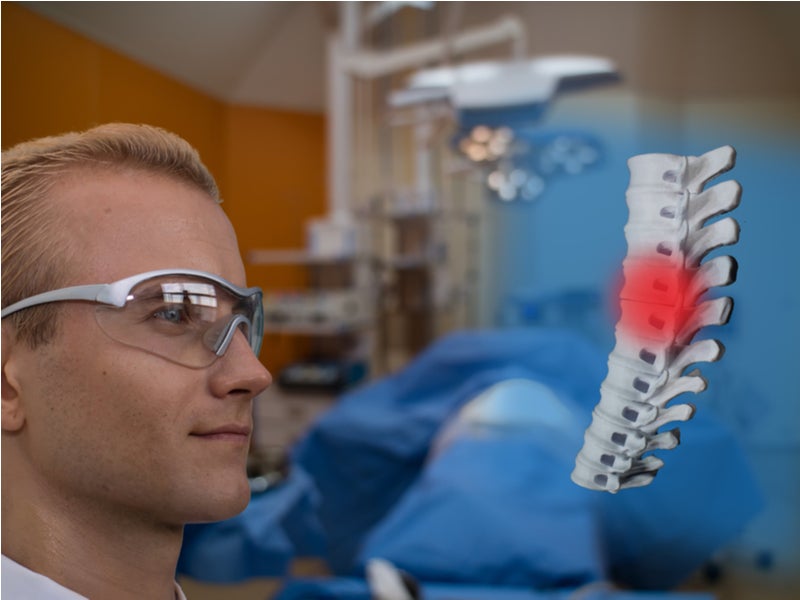A number of the current trends in healthcare are driving the use of VR/AR technologies. Many of these trends come from both the patient and physician side, such as increasing use of technology, growing popularity of health and wellness, and big data as well as treating patients using personalised and preventative care. Macroeconomically, the ageing population, increasing chronic disease, and emerging markets are the main market drivers.
Listed below are the key macroeconomic themes impacting VR/AR technology in the healthcare industry, as identified by GlobalData.
Enterprise adoption
As hardware developers make VR/AR headsets more affordable and user-friendly, companies are applying the technologies outside the consumer space to support business processes across a range of enterprise verticals including healthcare. The recent advancements in both hardware and software systems and the increasing capabilities of the technology have created objective value for enterprise.
Investment in VR/AR
According to a 2019 report by Ernst & Young, approximately $829M was invested in IoT start-ups in the VR space across 125 rounds in 2018, while AR start-ups received just over $1B of investments. In 2019, the US and China will lead VR/AR spending at $6.6B and $6.0B respectively, followed by Japan ($1.76B) and Western Europe ($1.74B). Canada, the US, and China will register the fastest VR/AR spending growth during 2017–2022. The healthcare, manufacturing, and entertainment sectors are expected to drive the adoption in India by 2020, with the market expected to reach $1B by 2021.
Content
With adoption increasing, VR/AR content creators should utilise the opportunity to build a brand name before the industry hits the mainstream. The video games industry offers abundant proof that consumers are willing to pay for effective and compelling content. Gaming headset Oculus Quest sold content worth approximately $5M in the two weeks after its launch in May 2019. Over the next three years, consumers will be looking for an accessible array of content choices. VR/AR content creators should focus on areas such as healthcare, films, video, ecommerce, gaming, and social media.
Demographics
The popularity of wearables with health applications, including VR/AR, is steadily on the rise in Western countries: ownership of wearables touched an average of 30% in the US, Spain, and Turkey in 2018. The Europe, Middle East, Asia Pacific, and Latin America markets are dominated by male customers. In the US, the largest market for wearables, female adopters prefer productivity enhancement devices such as fitness trackers, whereas male adopters are more inclined to try smartwatches and smart glasses. In terms of age group, Millennials and Generation Z compose the key adopters for wearables, while Generation X and Baby Boomers are demonstrating growing interest.
Supply chains
For the supply chain directly, wearable technology will reduce pressure on doctors, medical professionals, hospitals, and pharmacies while allowing insurers to gain a more accurate picture of health information from the insured. The digitisation of healthcare is already underway, with many patients and providers already utilising AI-powered healthcare services including home-based diagnostics, virtual health assistants (such as Babylon Health in the UK), as well as virtual nurse assistants.
How well do you really know your competitors?
Access the most comprehensive Company Profiles on the market, powered by GlobalData. Save hours of research. Gain competitive edge.

Thank you!
Your download email will arrive shortly
Not ready to buy yet? Download a free sample
We are confident about the unique quality of our Company Profiles. However, we want you to make the most beneficial decision for your business, so we offer a free sample that you can download by submitting the below form
By GlobalDataIn the future, a doctor’s role may evolve to providing more advanced care, where automated prescription services will modify prescriptions in real-time, accelerating the drug supply chain. Early adopters are set to position themselves better in the growing industrial IoT ecosystem by leveraging these technologies.
This is an edited extract from the Virtual/Augmented Reality in Healthcare – Thematic Research report produced by GlobalData Thematic Research.





Related Company Profiles
Babylon Healthcare Services Ltd
Iot Holdings Plc
Oculus Pvt Ltd